



Cracow the ancient seat of Polish kings and intelligentsia, a city of legend and myth that evokes the most fanciful of images, from dragons under the catacombs of Wawel, to Tartar hordes repelled at the gates, to pigeon-knights waiting for their king to return. Kraków’s postcard-perfect Old Town comes complete with Europe’s largest medieval market square and even fairy-tale Wawel Castle overlooking the river. Discover its main landmarks during one day full of beauty.
1
All year
1 city
10-50
Medium
Up to 30 days*
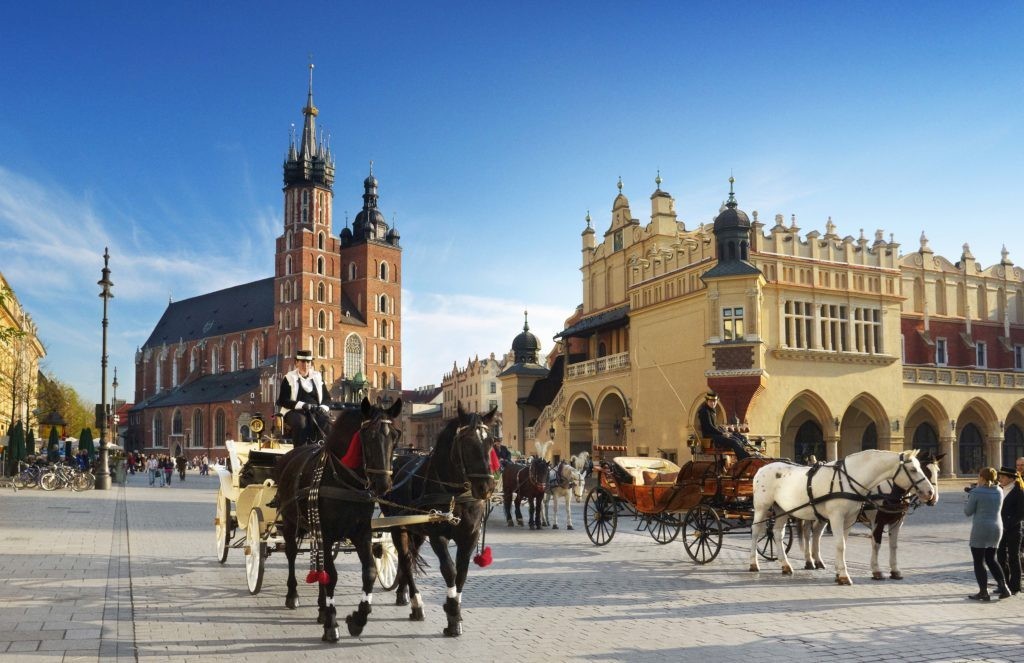
Metting with your guide in the morning either at your hotel or at the Main Market Square. 8 to 10 h sightseeing. First entrance to St. Mary's Cathedral then walk around the Old Town: the Cloth Hall, Town Hall Tower, St. Adalbert Church, St. Florian's Gate, Barbican, Słowacki Theatre, Courtyard of Collegium Maius, entrance to Franciscan Church, St. Peter and Paul Church. Entrance to Wawel Hill. Sightseeing of Wawel Cathedral, entrance to Wawel Castle Royal Chambers. Some time for rest at Wawel Hill. Walk to Kazimierz district and sightseeing. Entrance to the Old Synagogue and Remuh Synagogue. The end of sightseeing.
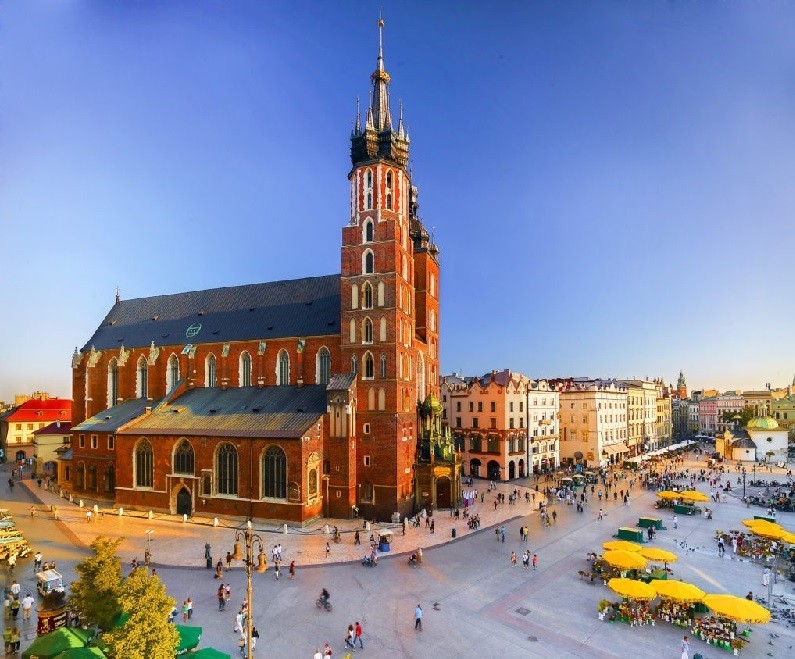
Kraków is one of the oldest Polish cities. The city attracts a lot of tourists from around the world. We will start sightseeing from the Old Town. Kraków Main Squere is Europe’s largest medieval market square. You will see most of the attractions simply by walking. Spectacular Cloth Hall surrounded by historic tenement houses, the most famous artistic cellar in Kraków - Piwnica pod Baranami, as also as St. Mary's church - one of the most important church in Kraków, built in the 14th and 15th centuries. We will cont...
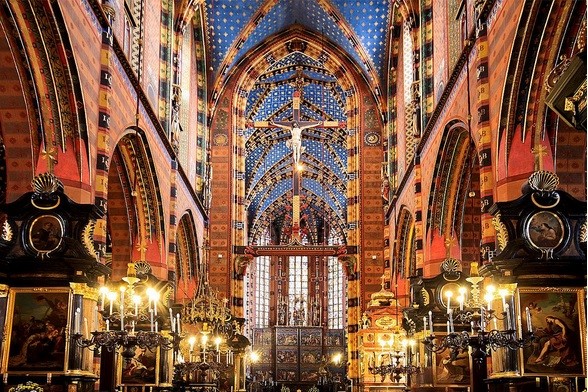
St. Mary's Basilica is one of the most famous monuments in Krakow and Poland. It is one of the largest and most important, after the Wawel Cathedral, church in Krakow. It is located at the north-eastern corner of the Main Square, on St. Mary's Square. Dating from the end of the 14th century, the basilica is preserved in the Gothic style. In the 15th century, chapels were added to the aisles. The greatest gem of this monument in Krakow is the altar of Veit Stoss from the end of the 15th century. It is the largest Goth...
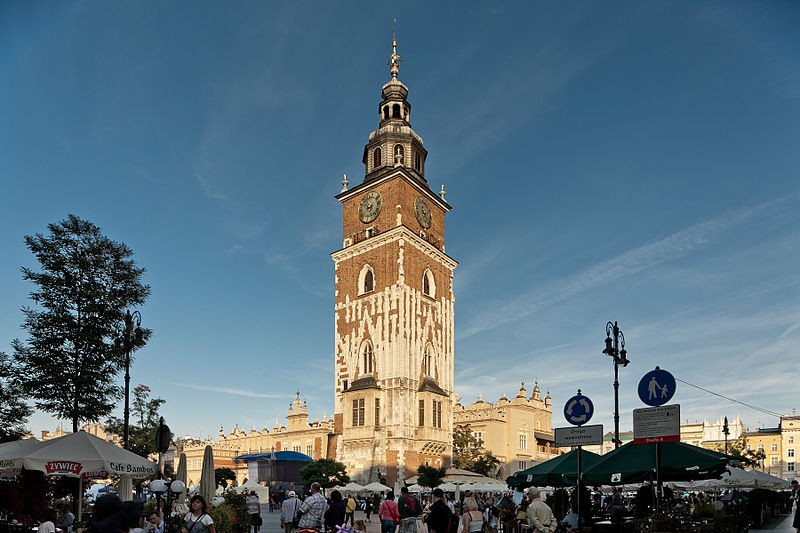
The Town Hall Tower is the only remaining part of the Old Kraków Town Hall. This building was built at the turn of the XXIII and XIV centuries in the Gothic style. In 1524 a clock imported from Nuremberg was installed on the tower. The tower is currently a branch of the Historical Museum of the city of Krakow. From the top of the town hall tower visitors can watch the panorama of the Old Town. There is also a tourist information point in Krakow. Please note that ITS-Poland works with groups only (10 participants and...
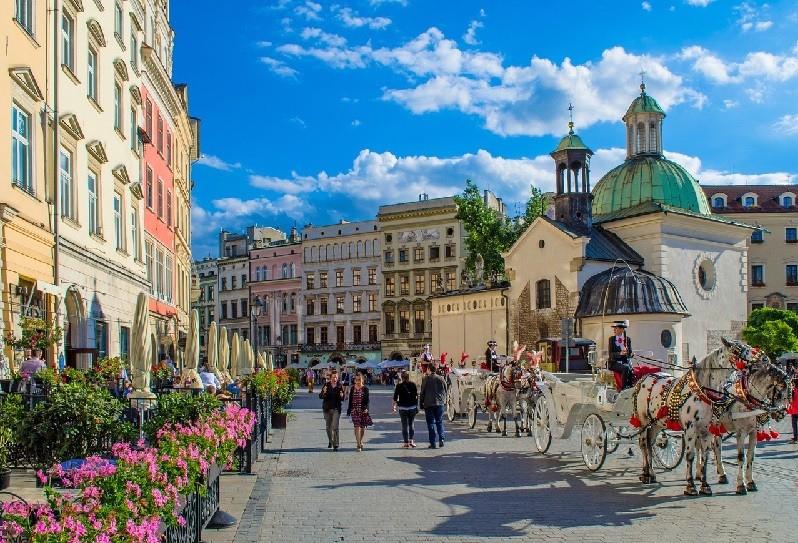
The Church of St. Adalbert in Krakow is the oldest church in the city. It was founded about the 11th century and replaced the previous one made of timber. The tradition says that St. Adalbert, the bishop of Prague and a martyred missionary, spoke to Krakow residents standing just in the place of the present temple. Today, the Church of St. Adalbert’s in Krakow is still opened to the public. The sacraments and services are held here both on Sunday and on weekdays, and between them the facility is opened to tourists. ...
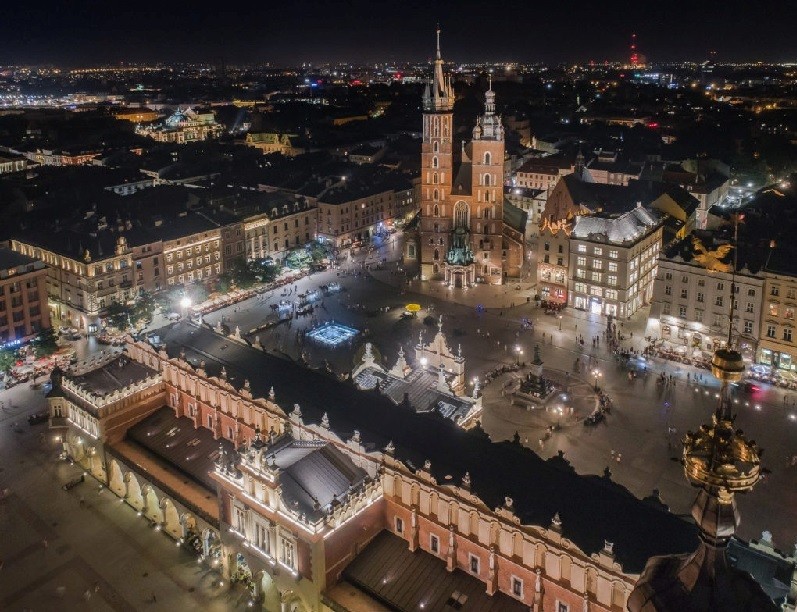
The Cloth Hall are one of the most important historical buildings in Krakow. They are located in the middle of the Krakow Market Square. They were the first medieval department store with merchants from all over Europe. The first Cloth Hall, which was built in the 13th century, when Krakow was granted city rights, were two rows of stone stalls creating a street in the middle of the Market Square. Both ends were locked with a grate at night to keep thieves away. The brick, roofed Cloth Hall was built in the 14th cent...
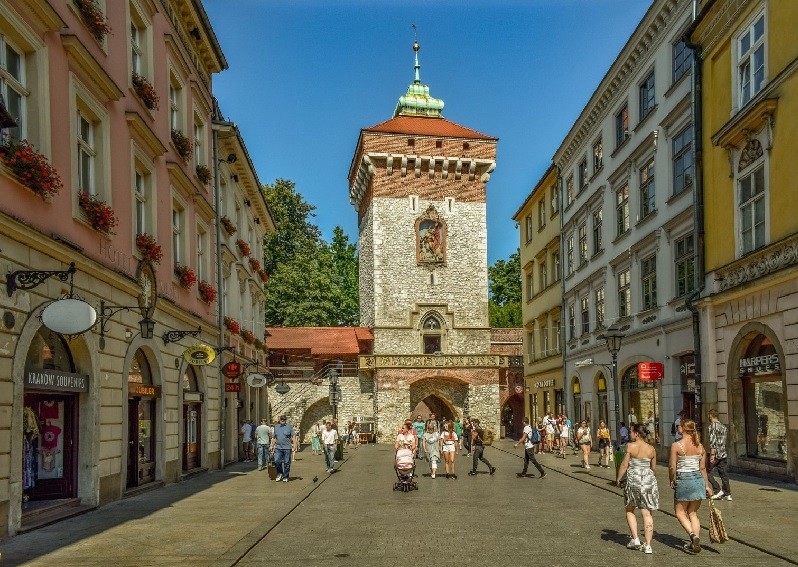
Built on the break of 13th and 14th century St. Florian’s Gate is one of eight defensive gates surrounding Krakow’s Old Town and a reminder of the old city walls. St. Florian’s and Rzeznicza Gates are the only ones to remain up to this date. However, in 15th century the latter was sealed up and incorporated into a newly built church. St. Florian’s Gate is also a part of the Royal Road that would lead kings, noblemen and other esteemed guests throughout the entire Old Town. Passing through the gate the Royal Road cont...
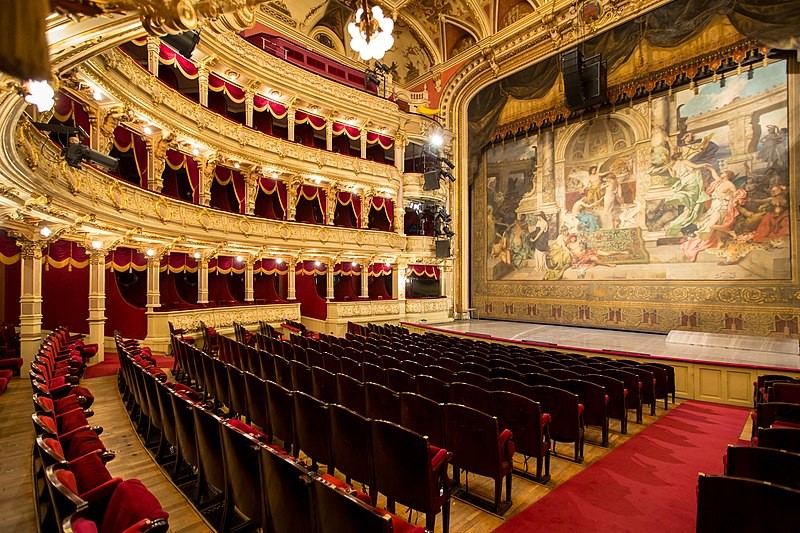
Juliusz Słowacki Theatre is one of the most interesting buildings in Kraków's Old Town and one of the most interesting sites for tourists arriving to Kraków by train or coach. It belongs to the group of artistic institutions which shows plays of the most famous works of literature and music, and attracts the attention of everyone who is a fan of so called high culture. The building of Juliusz Słowacki Theatre in Krakow was opened in 21 October 1893. It was modeled after some of the best European Baroque and Eclectic ...
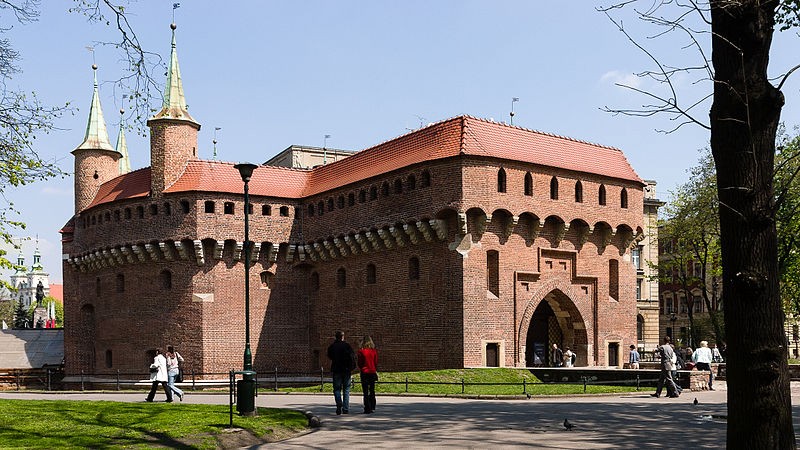
Barbican is one of Kraków’s most recognisable landmarks. It is situated at Basztowa Street in Planty Park just next to Słowacki Theatre. If you happen to arrive to Kraków by train, it is probably one of the first landmarks you will see. Locals call it in a friendly manner “a saucepan”, because of it shape but in truth it is the show-piece of the city's medieval defences. It was built in the 15th century and was part of the main Kraków defensive structures, connected to city walls and a moat. Built in Gothic style, th...
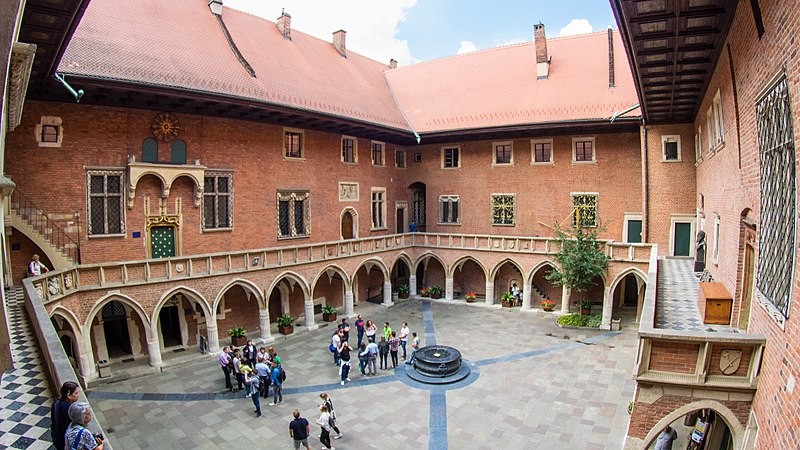
Collegium Maius, located at the intersection of Świętej Anny and Jagiellońska Streets, is the oldest university building in Poland, and the second in this part of Europe (after Prague, 1348). It was founded by King Casimir the Great in 1364 as the Krakow Academy. The numerous outstanding graduates of the Jagiellonian University include the creator of the heliocentric theory, the astronomer Nicolaus Copernicus and Karol Wojtyła, later Pope John Paul II. Currently, Collegium Maius houses the Jagiellonian University Mu...
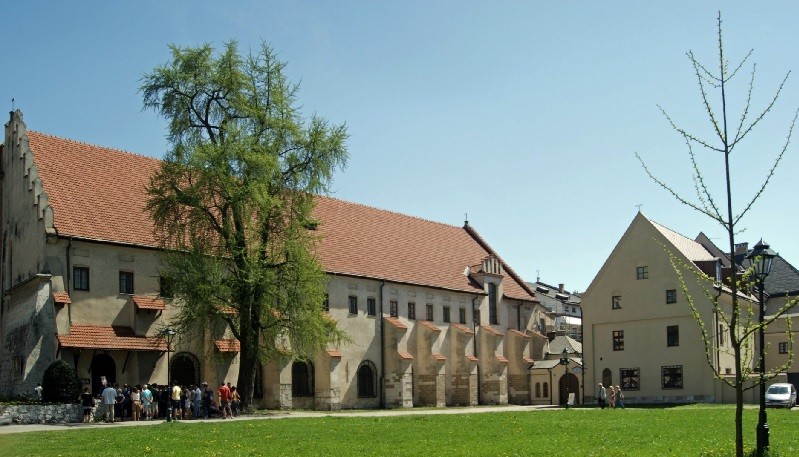
St. Francis of Assisi Church is situated in the very heart of Kraków’s Old Town at 2 Franciszkańska Street just by the famous Pope’s Window. The church, currently Minor Basilica, was consecrated in 1296. It has been enlarged many times. In 1462, 1476, 1655 and 1855 the building burnt. Nowadays, it has a brick construction with a presbytery, transept, aisle and 3 chapels. Tourists usually want to see here stained glass windows made by famous Polish artist Stanisław Wyspiański and very original polychromy of the same a...
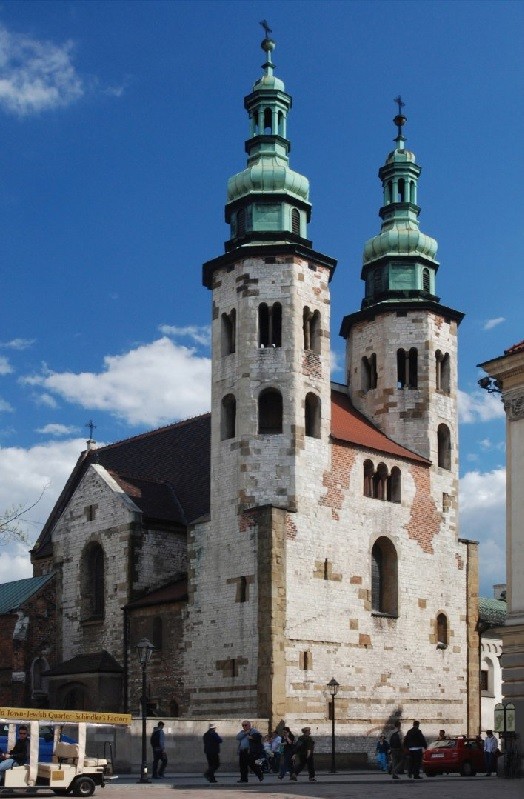
This Romanesque roman-catholic church built in 1098 in Okol settlement is one of the oldest buildings in Krakow and possibly the best-preserved such building in Poland. Its fortified structure held against the Mongol raid of 1257 and gave shelter to the local people. Although the building remained mainly Romanesque, Baroque interiors and steeples were added during 17th and 18th centuries. Photo credit: All files, if not stated otherwise, are licensed under the Creative Commons Attribution-Share Alike 3.0 Poland lice...
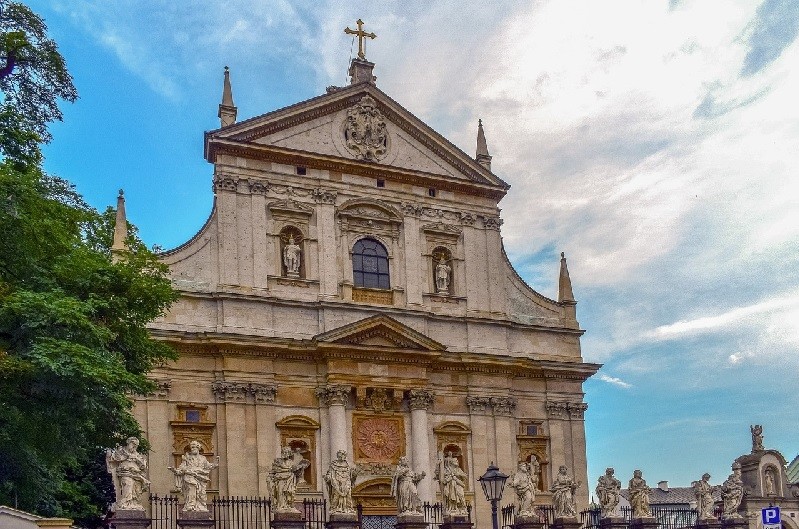
Saints Peter and Paul Church is a Roman Catholic church built in the early 17th century. Located at Grodzka Street right next to St. Adrew’s Church and about half-way between Krakow’s Main Market Square and Wawel Castle. The Church was built for the The Society of Jesus by Polish king Sigismund III Vasa and it is the very first Baroque Styled building in Krakow. The dolomite façade with statues of Jesuit saints carries some resemblance of Church of Santa Susanna in Rome. More statues of apostles are placed of fence p...
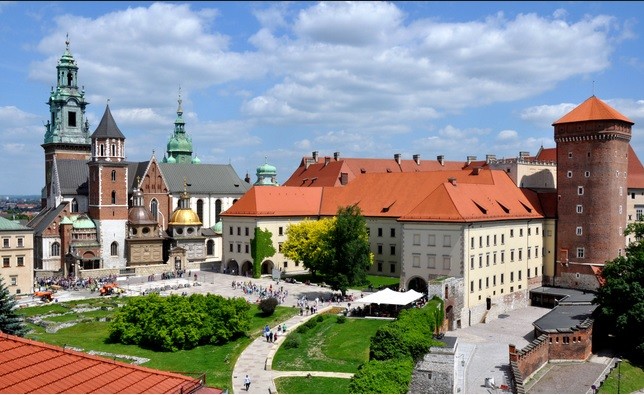
The Wawel Cathedral is undoubtedly one of the most important monuments in the country. The full name of the church is the Cathedral Basilica of St. Stanislaus and St. Wenceslas in Krakow. It is here that the most important events in the history of Poland took place. Coronations, royal weddings and funerals. Inside, the central place is occupied by the 17th-century confession, i.e. the canopy altar of St. Stanisław, the bishop and patron of Poland, who died in the 11th century as a result of a conflict with King Boles...
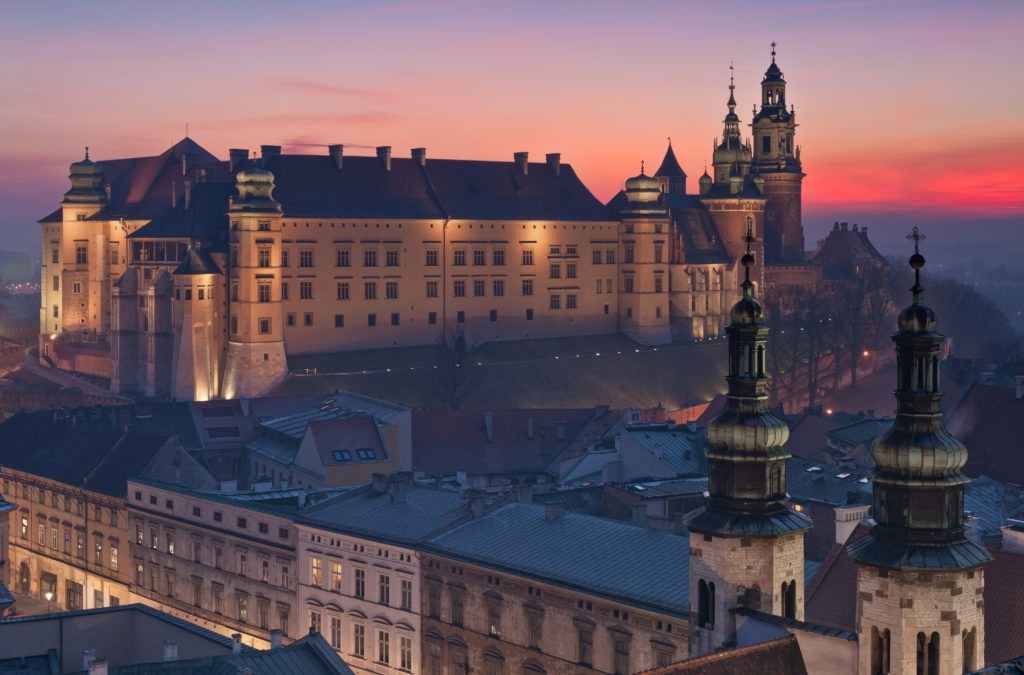
Wawel Royal Castle is one of the top highlights in Kraków. Inscribed on the UNESCO World Heritage List it is one of the most visited places in Krakow. For centuries, it was the seat of Polish kings and a symbol of statehood. In 1930 the Castle also became one of the most important museums in Poland. The museum collects works of art historically or artistically related to Wawel, with Polish rulers, and great magnate collections.It collects paintings, prints, sculptures, fabrics, goldsmiths, militaria, porcelain and f...
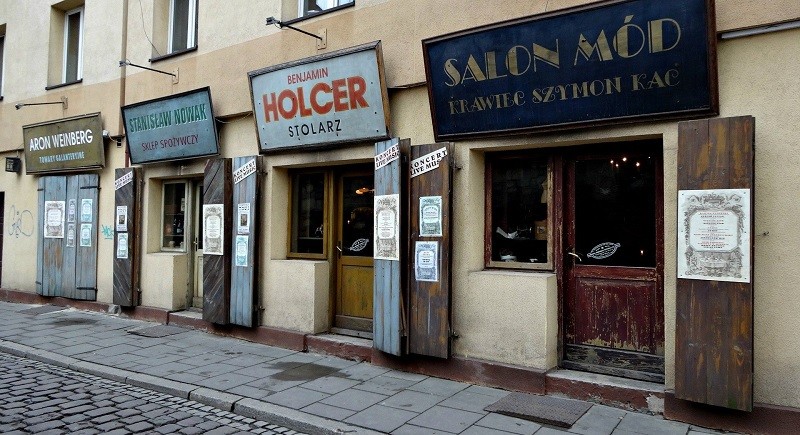
The Jewish people have always played an important role in the history of Krakow and Kazimierz and its Jewish population have always played an important role the history of Krakow and have had a great impact on regional economy as well as culture. Kazimierz, that is known as a district of Krakow, used to be a stand-alone city. It was granted city rights in early 14th century, not too long after Jews in the Kingdom of Poland received numerous rights, such as freedom of religion, trade and travel. Since the very beginni...
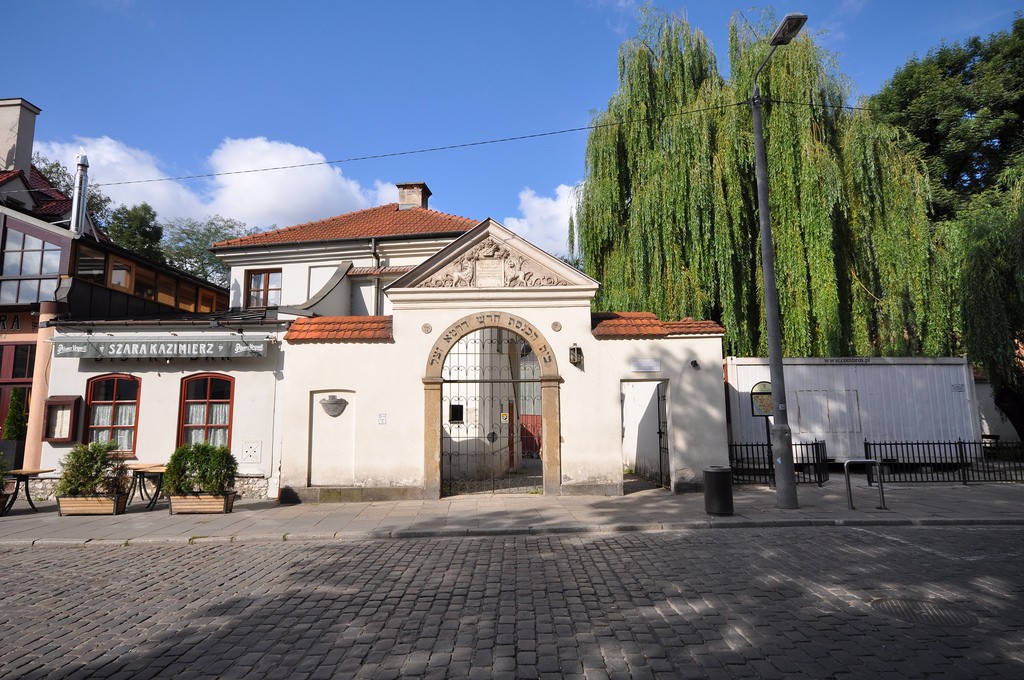
Remuh Synagogue is the only active synagogue in Krakow. It is situated in the old Jewish Kraków district – Kazimierz, at 40 Szeroka Street. It is the only synagogue in the city which has regular religious services and the second oldest synagogue in Kraków. The construction of the synagogue started in 1558 in the place of a former wooden building which had burned. IThe building was rebuilt many times. Unfortunately, during World War II the synagogue was deeply devastated and its interior design was stolen. After the ...
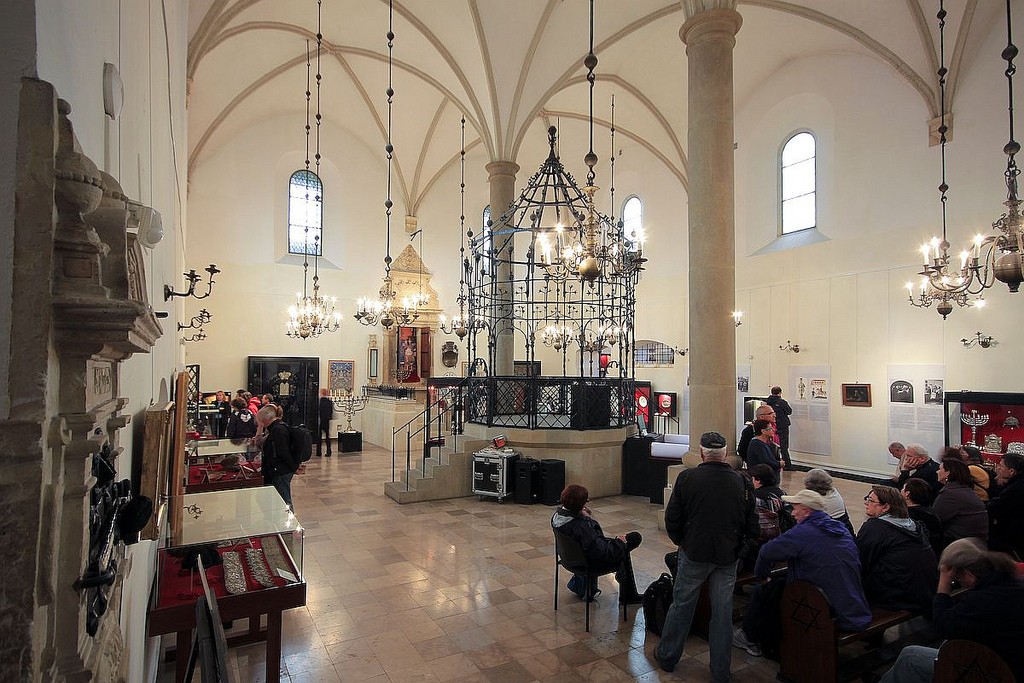
The Old Synagogue is currently a branch of Kraków City’s Museum and is situated in the very heart of Kraków’s Kazimierz at 24 Szeroka Street. It is one of the oldest buildings of this type in Poland and in Europe. It was built in the second half of the 15th century. Unfortunately, during its history it has burnt a few times. Still, the most tragic period was of course the World War II when the Nazis devastated the building completely. It wasn’t rebuilt till 1956. Then it regained its Gothic-Renaissance look. Nowadays...
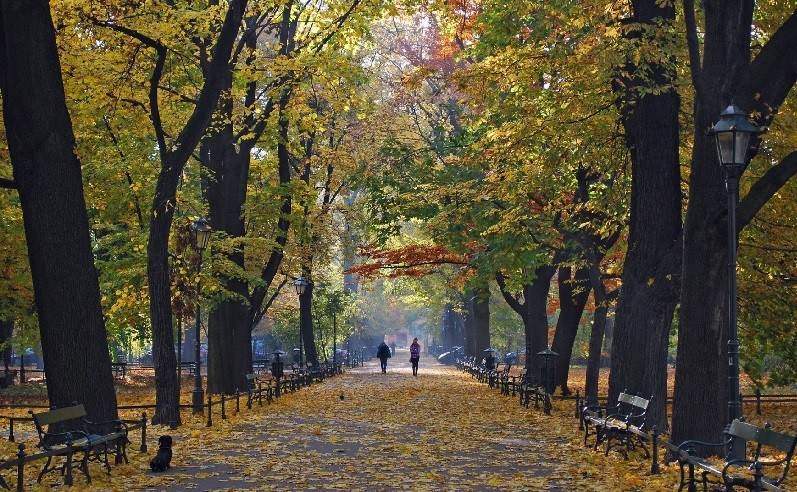
Planty is a large scale city park in right in the middle Krakow as well as one of the largest in the city. Planty may be referred to a sort of a green border encircling the historic old town, as it was planted in place of the old city walls. The park is filled with chestnut, maple, lime, ash and poplar trees. It gives plenty of shade to cool off during hot summer days and is a perfect place for a pleasant, relaxing stroll. Photo credit: All files, if not stated otherwise, are licensed under the Creative Commons Attr...
Local guide, Wawel Museum guide
St. Mary's Basilica, Wawel Cathedral, Wawel Castle Royal Chambers, the Old Synagogue, Remuh Synagogue
Walking tour only
Your hotel (if in the city centre) or the main Market Square
Your hotel (if in the city centre) or the main Market Square or Kazimierz District according to your preference
English, German, Norwegian, French, Spanish, Italian and others on request
City tour
Actually it is your endurance. We can organise 8, 10 and even 12 h sightseeing but from our experience we know that majority of groups tend to order 8 to 10 h. This is why you see it in this offer. Our offer is always tailored made, if you do not see the option you are interested in and need modifications just contact us and we will prepare an alternative for you.
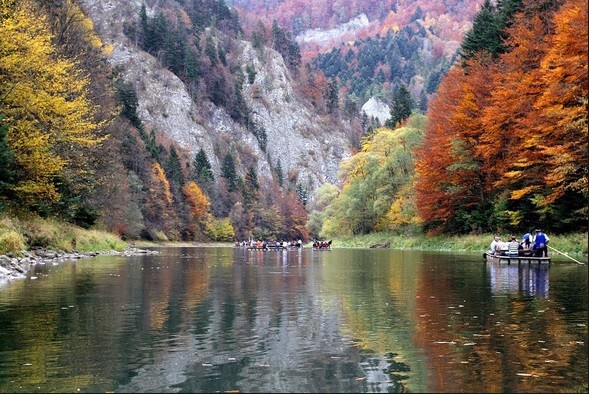
Discover the beauty of Pieniny National Park just on the doorstep of Kraków. Take part in rafting along calm waters of Dunajec river in its famous gorge from Sromowce Wyżne to Szczawnica. The cruise is performed on traditional wooden rafts and tak...
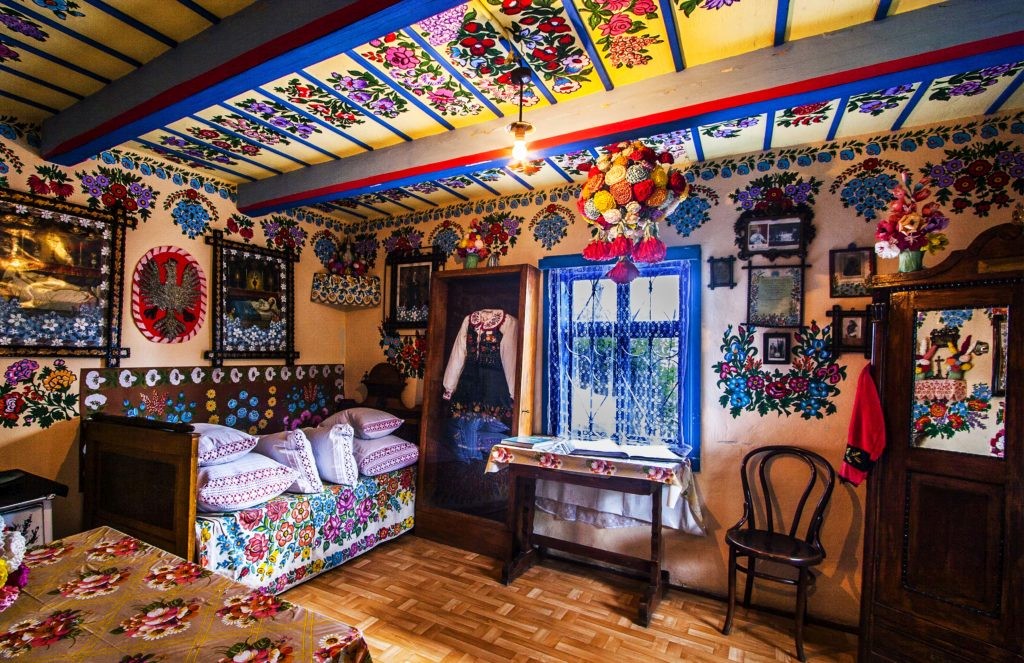
Poland is famous for its folklore and countryside style of living. We are proud of regional clothes, food, wooden architecture, arts and crafts. Discover traditional village lifestyle of Lesser Poland region and try your hand at creating tradition...
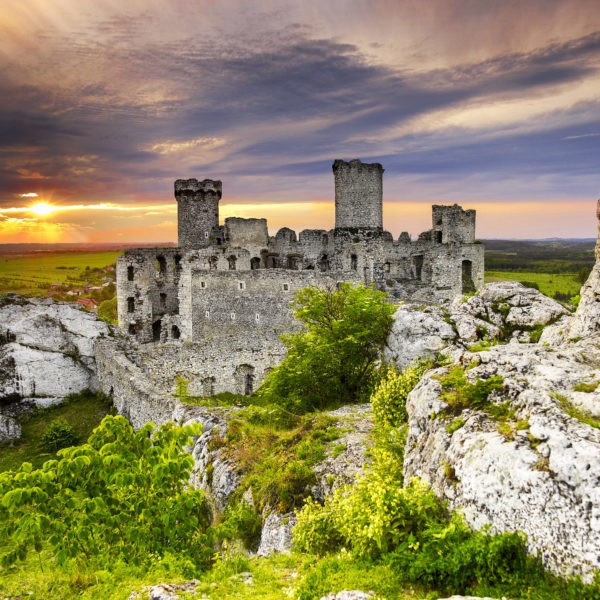
Jurassic Cracow-Częstochowa region is famous for its fanciful rock formations and caves. Here apart from natural phenomena of Ojców National Park, tourist can also find the most important religious centre in Poland - Jasna Góra Monastery with mira...
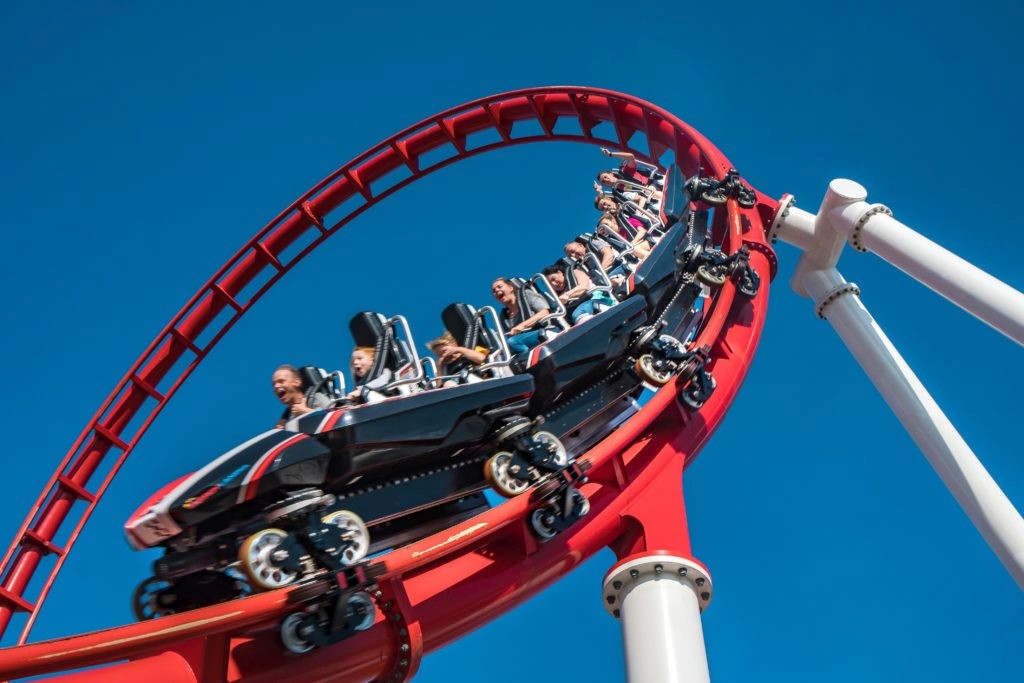
Family attractions of Cracow area are still undiscovered by many groups as most people concentrate on the historical monuments of the area. Still, if you happen to travel with children or teenagers you must take our tour just to give your pupils t...